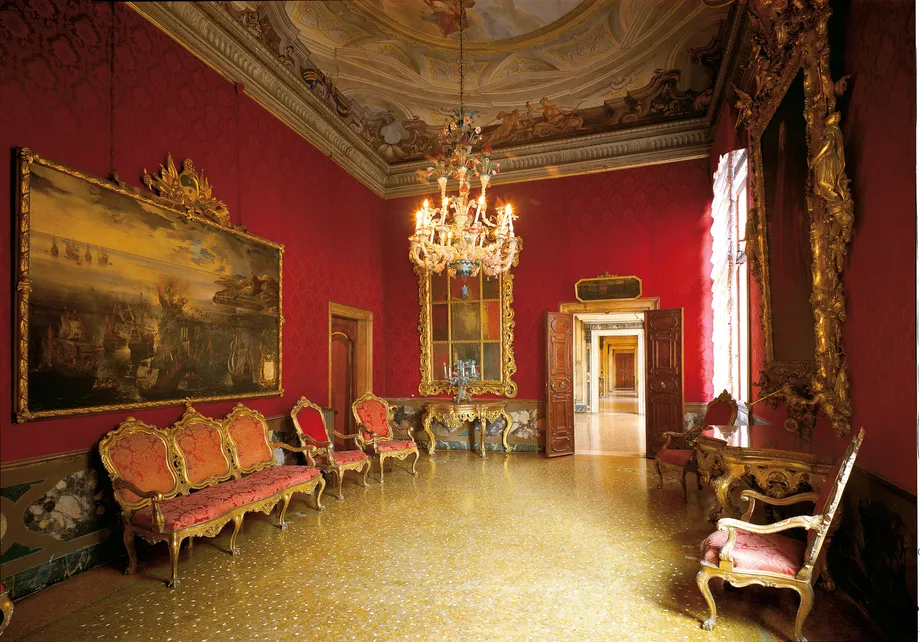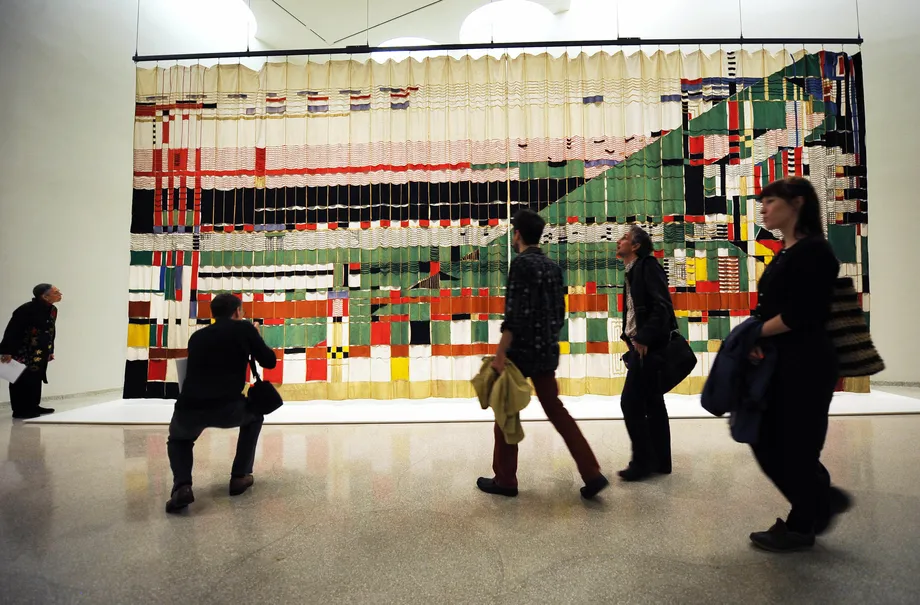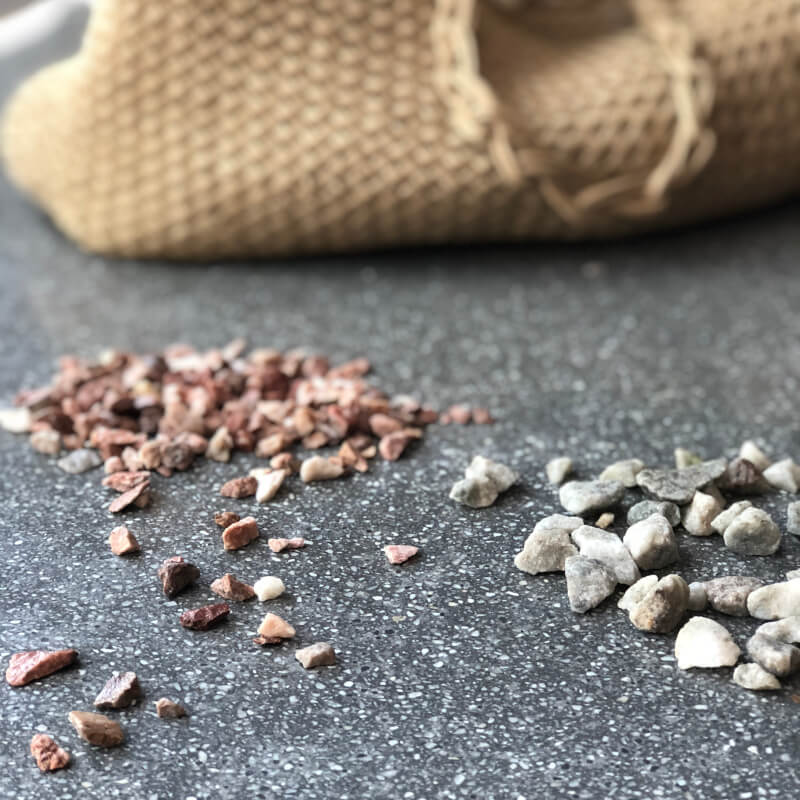Terrazzo is a beloved building material, celebrated for its use in flooring and wall cladding. Comprised of variously sized pieces of marble, granite, glass, quartz, sand, or any other suitable material, these are bound together with cement or epoxy resin. At its core, it shares a close resemblance to the composition of concrete.
This blend can be used to create precast elements or applied directly onto the desired surface. The most common precast products are tiles or countertops, though recently, terrazzo has been employed in the creation of an array of items: planters, dishes, glasses, and more.
No matter the application, once the mix has set, the exposed surface is polished. This process reveals the aggregates, achieving its signature finish.
Terrazzo: Origins and Evolution Through Time
Terrazzo's origins can be traced back to its predecessor, the mosaic. Crafted in ancient Egypt, then by the Romans and other civilizations, its most direct ancestor, however, mainly derives from the 18th-century Venetian pavement. Back then, leftover marble pieces from palace constructions were laid side by side on a mortar base. Alternatively, they were cast in a mix of cement, sand, or marble dust. In both instances, the surface was then hand-polished, creating terrazzo's characteristic finish.

Terrazzo was first introduced to America in the late 19th century, amidst Italian immigration. However, it was in the early 20th century that it gained significant popularity, thanks to three innovations:
- The electric polisher: Made the polishing process easier and faster.
- Metal dividers: Helped reduce cracks in the terrazzo.
- The hydraulic press: Allowed for the production of precast terrazzo pieces.
These advancements improved quality and facilitated production. Moreover, the Art Deco and Streamline Moderne styles of the 1920s and 1940s favored terrazzo in their designs.

Terrazzo remained the preferred flooring choice until the 1980s. However, the introduction of ceramic tiles and later, porcelain tiles in the 1990s brought a shift.
Porcelain tiles were easier to maintain and better suited to the design trends of the time, thus overtaking terrazzo in popularity and dominance. Terrazzo then became relegated to sidewalks and commercial spaces where a material with high wear resistance was needed.
Nevertheless, the early 2010s marked the renaissance of terrazzo, reaching peak popularity today. New design trends have rediscovered this noble material, creating patterns and combinations previously unseen in design and architecture.
Thanks to its versatility and customization options, terrazzo has once again become one of the most sought-after materials. This resurgence was partly made possible by new polishing and waterproofing technologies that addressed terrazzo's Achilles' heel: its daily maintenance.
Terrazzo Today
Today, terrazzo occupies a special place in the world of design and construction as a specialty, niche covering. It's unlikely to regain its status as the go-to material for any kitchen or bathroom, but its distinctive finish makes it unique for its admirers. Its endless possibilities make it the perfect material for the most demanding designers, and its advantages in terms of restoration make it ideal for those who value a long-lasting product.
Terrazzo is used both indoors and outdoors, and it can be customized with a wide range of colors and aggregates. Its growing popularity in contemporary architecture is due to its durability and unique aesthetic.
Main Characteristics
Terrazzo is a versatile and durable building material, valued for its aesthetic and functional qualities. It offers a resistant and easy-to-maintain surface.
Composition and Characteristics
- Composed of marble, granite, glass, quartz, and sand.
- Abrasion-resistant and durable over the long term.
- Available in a wide range of colors and textures.
Advantages of Terrazzo in Construction
Strength and Durability
Terrazzo is known for its high strength and durability in various environments. Its composition makes it ideal for high-traffic areas, ensuring a long-lasting surface that withstands the test of time without easily deteriorating.
Easy Cleaning and Maintenance
One of the most notable advantages of terrazzo is its easy cleaning and maintenance. Thanks to its smooth, non-porous surface, simply sweeping or mopping is enough to keep it in optimal condition, making it a practical and functional option for different spaces.
Terrazzo Manufacturing Process
Terrazzo is made by mixing stone chips, especially marble, with cement and other additives. The following are the materials and the most common installation techniques:
Materials Used in Manufacturing
- Stone chips, especially marble, as the main aggregate.
- Cement, usually white, as the main binder.
- Water-based resins, latex, polyester resins, or acrylics to improve mechanical properties.
There are different types of terrazzo installation.
Poured on site terrazzo installation
The terrazzo is prepared and poured directly at the installation site.
Precast tiles or slabs
Terrazzo tiles are created in a factory and then installed on site.
On site polishing and crystallization
Combine on site installation with the use of precast tiles, followed by a polishing and crystallization process to enhance shine and durability.
Uses and Applications of Terrazzo
Terrazzo for Interiors and Exteriors
Terrazzo is versatile and can be used both indoors and outdoors. Indoors, it's valued for its elegance and hardness, and it's an excellent option for floors and walls in homes, shops, and public spaces. Outdoors, terrazzo is weather-resistant, making it a durable option for terraces, patios, and pathways.
Customization with Different Colors and Aggregates
One of the greatest advantages of terrazzo is its customization potential. A wide range of colors and aggregates, such as pieces of glass, seashells, or special pigments, can be incorporated to create unique designs. This aesthetic versatility allows terrazzo to be adapted to different styles, from the most classic to the most contemporary.
Current Trends in Terrazzo in Architecture
Terrazzo has experienced a resurgence in contemporary architecture, standing out in projects that seek to combine the modern with the traditional.
Revaluation of Terrazzo in Contemporary Projects
Terrazzo has become a protagonist in modern architecture again, valued for its aesthetic versatility and its ability to bring a unique and elegant touch to spaces.
Architects and designers are incorporating it into interior and exterior design, creating sophisticated and avant-garde environments. The combination of colors and textures offers endless creative possibilities, allowing for the personalization of each project.
Sustainability and Aesthetics of Terrazzo Today
Sustainability is a key factor in today's architecture, and terrazzo meets this demand by being a durable and low-maintenance material. Its long lifespan and abrasion resistance make it an eco-friendly option, reducing the need for replacement and contributing to environmental care. In addition to its practical qualities, terrazzo stands out for its timeless and elegant aesthetic, adapting to different styles and maintaining its appeal over time.

